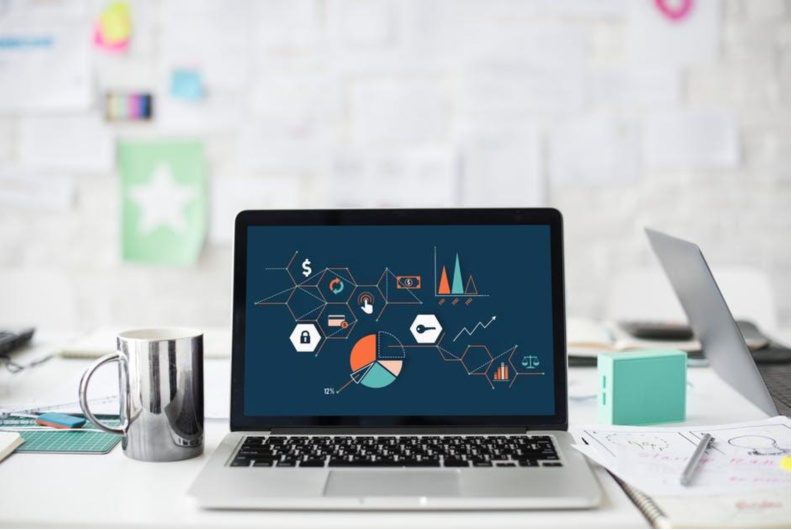Key Takeaways:
- Discover the latest advancements in payroll software and why businesses are adopting them.
- Recognize the significance of integration and automation in contemporary payroll systems.
- Learn about the role of data security in payroll software.
- Explore how AI and ML are transforming payroll processes.
- Get insights into industry innovations from trusted sources.
Introduction to Modern Payroll Solutions
In today’s bustling business world, payroll systems’ efficiency is increasingly seen as pivotal to operational success. Modern
payroll software solutions have been a game changer, evolving from rudimentary manual processes to sophisticated digital systems that revolutionize how companies manage employee compensation. This change goes beyond a simple technological improvement; it represents a strategic evolution in how businesses can improve accuracy, compliance, and overall productivity.
Integrating advanced features into payroll software ensures that businesses can adapt to the varying demands of a dynamic workforce. As companies increasingly operate globally and remote work becomes more commonplace, these systems provide the flexibility to accommodate diverse regulatory requirements and employee expectations. Therefore, understanding and adopting the latest payroll software trends becomes crucial for effectively managing these challenges while leveraging the insights these systems can offer for future growth.
The Rise of Automation
Automation stands at the forefront of modern payroll innovations. By transitioning historically manual processes to automated ones, payroll systems can significantly enhance efficiency and accuracy, resulting in notable reductions in administrative costs and errors. The implications of automation in payroll extend beyond simple routine tasks; automation ensures compliance with tax regulations, timely distribution of employee wages, and meticulous maintenance of employee financial records.
Through automation, organizations can better align their HR efforts with broader business goals, shifting from a transactional role to a more strategic partner in managing human capital. This transformation enables the redeployment of HR resources towards key initiatives such as employee engagement and talent development, which are crucial to maintaining a competitive edge. The result is a working environment where operational excellence and strategic foresight coexist, driven by precise and reliable payroll systems.
Integrating with Broader Business Systems
Integrating payroll software with critical business systems—such as Human Resources Information Systems and financial management platforms—represents another significant advancement. When these systems operate in synergy, the resulting unified data platform provides comprehensive insights that drive strategic decision-making. Consolidating data from various sources into a single interface allows for seamless information flow between departments, reducing redundancies and errors.
Consider the impact of integration: HR departments no longer need to worry about variances between payroll and employee data because an integrated system ensures all platform updates are instantaneous and accurate. This capability results in substantial efficiency gains, and fosters informed decision-making aligned with business objectives. The comprehensive integration of software systems is a cornerstone in optimizing business operations and aligning them with industry best practices.
The Role of Data Security in Payroll
As companies increasingly shift to digital payroll solutions, the requirement for more robust data security measures increases paramount. Protecting sensitive and personal information is a fundamental responsibility, given the increasing incidences of cyber threats and data breaches that can lead to severe financial and reputational damages. The architecture of modern payroll software is aligned with industry-leading data protection standards. It integrates state-of-the-art security features such as encryption, multifactor authentication, and audit trails.
These measures are critical, as the consequences of a data breach extend far beyond immediate financial loss. Data breaches can undermine customer trust, damage brand reputation, and result in long-term strategic setbacks. Hence, a well-secured payroll system protects employee information and fortifies a company’s reputation as a trustworthy organization. Businesses can ensure regulatory compliance and build lasting trust with their employees and stakeholders by prioritizing security within payroll solutions.
AI and Machine Learning in Payroll
The advent of AI and ML in the payroll sector signals a transformative approach to data management and operational efficiency. These advanced technologies can analyze vast datasets, provide thorough insights that drive decision-making, and enhance the predictive accuracy of payroll processes. AI and machine learning facilitate tasks such as anomaly detection and forecasting, identifying irregularities in financial transactions that could indicate errors or fraudulent activities.
Moreover, AI empowers payroll systems to offer personalized recommendations based on in-depth analysis of employee data. These systems can predict future payroll expenses through machine learning algorithms and assist in strategic financial planning. Integrating these technologies into payroll software enhances accuracy and elevates them as comprehensive management tools that shape long-term business strategies.
Adapting to Changing Regulations
In an era of constantly evolving legal and regulatory landscapes, payroll systems must be adaptable to ensure compliance with many employer obligations. Modern payroll software is equipped to promptly update in response to regulatory changes, thus reducing administrative burdens associated with compliance management. This capability is critical for avoiding substantial fines and penalties arising from regulatory non-compliance.
Furthermore, an agile and responsive payroll solution prevents overhead costs associated with compliance failures and positions businesses as stewards of ethical practices, showcasing their commitment to lawful operations. By adopting adaptable payroll systems, companies can concentrate on the primary business operations without getting distracted by the complexities of regulatory obligations.
Real-World Examples of Payroll Innovation
Numerous enterprises successfully leverage advanced payroll solutions to streamline operations and facilitate workforce management. These real-world applications exemplify the versatility of modern payroll software in accommodating complex compensation structures and underscore its ability to adapt to varied employment models and legal requirements. By adopting these cutting-edge solutions, organizations gain a strategic advantage that enhances organizational productivity and maintains high employee satisfaction and engagement levels. The real-world applications of payroll software showcase the potential of technology to transform routine administrative tasks into streamlined, efficient operations integral to modern HR and financial strategies.
Future Outlook
The landscape of payroll technology holds considerable promise as innovations continue to emerge. Blockchain integration for transaction security and the potential of real-time payments are examples of how payroll processes may evolve shortly. With a growing emphasis on analytics, payroll systems are set to become even more integral to strategic business planning. Businesses that proactively engage with emerging trends and invest in advanced payroll systems stand to gain significant competitive advantages. By aligning payroll technology with business objectives, organizations can foster an environment of efficiency, compliance, and growth, finally setting themselves up for ongoing prosperity in an ever-changing business landscape.







